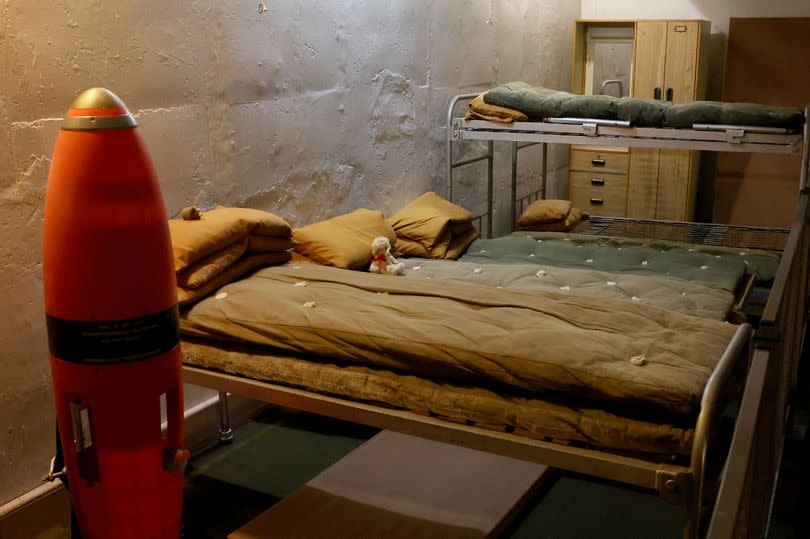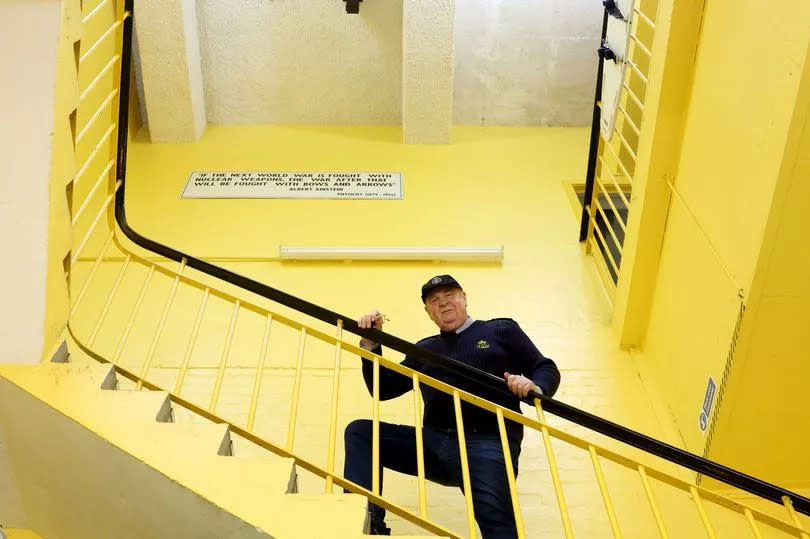Inside the UK's secret nuclear bunker that was hidden for decades

For years, this vast underground bunker was one of the UK's best-kept secrets - a nuclear defence site hidden deep in the Cheshire countryside at Hack Green. Even local residents were oblivious to what lay beneath the concrete entrance hub.
The bunker remained shrouded in secrecy until its official decommissioning in 1993. Today, it serves as a unique tourist attraction and a stark reminder of the Cold War era - a period marked by geopolitical tensions between the Soviet Union and America and its allies during the 1970s and 80s.
Visitors can now explore the eerie corridors where civil servants once prepared for the threat of a nuclear attack. In its operational years, the bunker would have served as the Regional Government Headquarters in the event of a national emergency.
While it is now a family-friendly attraction, some rooms are deemed too frightening for children. A special 'Small Spies' trail has been designed to help younger visitors understand the exhibits.
The attraction has recreated key areas within the bunker, including a radar room, a decontamination room, a massive underground water tank, and a dormitory capable of housing around 150 civil servants in the event of a nuclear attack. The museum also boasts the largest public display of decommissioned nuclear weapons in the country, reports the Manchester Evening News.
The museum offers a journey through the site's history, complete with interactive exhibits - including a chilling nuclear shelter experience where visitors can simulate the sensation of a bomb detonating in the north west and the messages they would have received while taking refuge.
However, a cautionary note is given before the experience begins, advising those with medical conditions or children against entering.
Originally constructed as a radar station in the 1950s to counter potential nuclear threats, the concrete structure evolved into a more sophisticated station in the 1960s, overseeing airspace and civilian traffic across the north west.
Its radar function was discontinued later in the 1960s. In the 1980s, then Prime Minister Margaret Thatcher overhauled the armed forces and the UK's civil defence headquarters to ensure government continuity in the event of a nuclear war.
Subsequently, Hack Green was transformed into a Regional Government Headquarters in case of war, at a cost of £35mn. It was one of three such facilities in the UK that would have governed the country in the event of a catastrophe.
Despite Hack Green being decommissioned, the world remains on high alert, prompting the Government to construct NEW secret bunkers. However, their locations remain classified information, leaving their whereabouts up to speculation.
Rodney Seibert, combining his experience in finance and preparing the nation for nuclear war for the Government, transformed a bunker into the unique public spectacle it is today. Having an inside understanding of the site, Rodney took the opportunity to purchase it when it was previously up for sale with the aim to develop it primarily as a communication site.
The idea to re-purpose the remaining unused part of the site into a museum was suggested as only a small segment was used for its initial purpose. Rodney comments: "I had an interest in the Cold War having been involved myself, so I had some bits and pieces myself, but it was completely empty. The site extends to over 35,000 square feet, and we were only using a small part of it, so it was mooted that we should open it as a museum with the unused portion of the bunker. I had no idea at that point that it would grow to the extent that it has."
By 1998, the attraction opened its doors to the public and it wasn't long before it caught their intrigue. In Rodney's words: "It's been mad ever since".
Even locals were oblivious to the previous functions of the site, apart from its known history as RAF Hack Green. Unaware of its role as a radar station and later as a nuclear facility in the 1980s, Rodney stated: "It had been an RAF base in the 1940s, but nobody around here knew what it was later turned into. They didn't know this was being converted to a radar station, let alone a nuclear facility in the 1980s, it was all top, top secret."
Designed to resist a nuclear bomb's impact, this fortress offers life support, water, and provisions for individuals to survive up to three months post-attack. Whilst many of the radar and computer systems are now 'obsolete', all of the life-sustaining systems are operational.
Rodney shares, "It has its own generators, water supply and air conditioning system - they are all maintained and working. Without resupply, these were designed to run for about three months with 150 people in it."

This peculiar construction has also caught the attention of film crews, playing host to several movie and TV show productions. This includes remakes like the Ipcress Files and Ghost Boat featuring David Jason.
A room originally set up specifically for the Ghost Boat filming still stands in the underground section that visitors can now tour.
The continued flow of thousands of visitors eager to explore this remarkable edifice greatly inspires Rodney. He says: "We never market it at people who are interested in any particular war, we find people still come in their thousands anyway."
"My main thrust was to preserve the bunker, and provide a good day out for families that is both exciting and educational as well. So that's where we come from."
NEWSLETTER: Sign up for CheshireLive email direct to your inbox here

 Yahoo News
Yahoo News 
